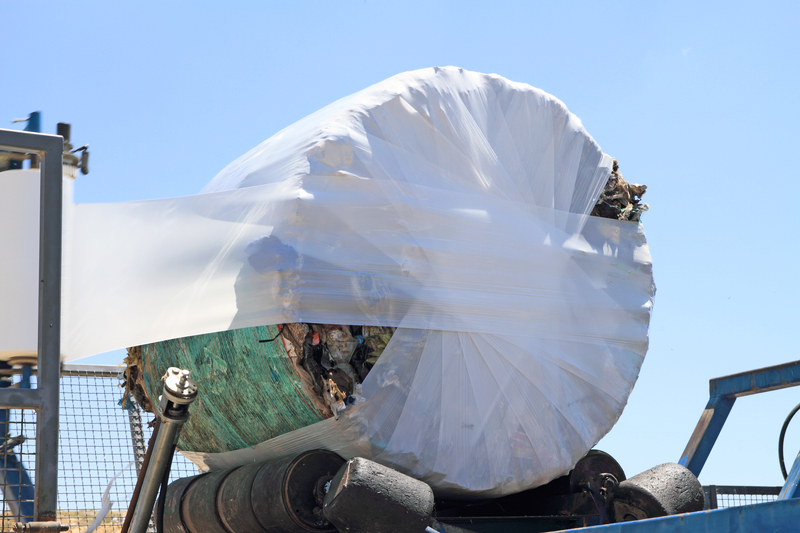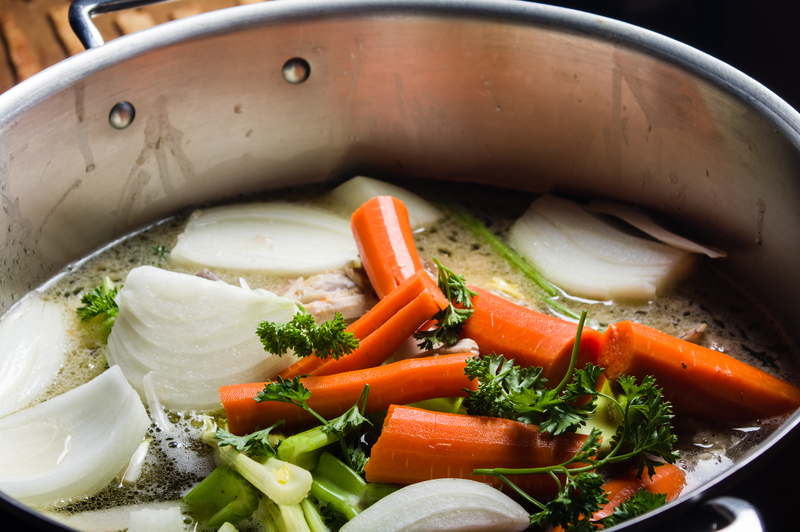Disposal Dilemmas: Smart Solutions for Pots and Pans
It happens in every kitchen: beloved cookware wears out, gets damaged, or simply becomes outdated. But when it's time to say goodbye, many home cooks are left wondering: What are the best ways to dispose of old pots and pans? Can you recycle them, donate them, or breathe new life into them? In this comprehensive guide, we unpack eco-friendly, creative, and practical solutions for giving your old cookware a second lease on life--or sending it on its way with minimal environmental impact.
Understanding the Challenge: Why Pots and Pans Disposal Is Complicated
Before diving into smart disposal methods, let's examine why pots and pans present unique recycling challenges:
- Material complexity: Cookware is often comprised of mixed materials such as metal, non-stick coatings, plastics, and glass lids.
- Size and weight: Larger, heavier items may not suit curbside recycling or standard donation drop-offs.
- Unknown hazards: Some coatings (like Teflon) or components can be hazardous or not recyclable through normal means.
- Lack of public information: Many cities provide limited guidance on how to dispose of pots and pans, leaving consumers in the dark.
Why Not Just Toss Them in the Trash?
Throwing cookware into the garbage might be the easiest option, but it's rarely the most responsible. Most pots and pans end up in landfills, where metal doesn't decompose for hundreds of years. Non-stick coatings can even release toxic chemicals as they degrade. These factors make it vital to seek sustainable solutions for old cookware disposal.

Smart Solutions for Disposing of Old Pots and Pans
Ready to tackle your cookware clutter? Here's a step-by-step breakdown of the top eco-friendly and community-positive options.
1. Donate Gently Used Pots and Pans
- Are your pots and pans still in usable condition?
- No warped bottoms, extensive rust, or severely scratched non-stick surfaces?
- Donation is often the best first choice!
Major thrift stores, shelters, and charities often accept clean, safe cookware. Contact your local organizations or use websites like Donation Town or Goodwill for drop-off locations and pick-up options. Colleges, community centers, or immigrants' assistance programs may also welcome old cookware.
- Tip: Clean items thoroughly and group lids with their matching pots or pans for greater donation success.
2. Recycle Old Pots and Pans (Metal Cookware Recycling)
Not all cookware is created equal--recyclability depends on what your pans are made of.
Metal Cookware (Stainless Steel, Aluminum, Cast Iron)
- Metal pots and pans are usually recyclable as scrap metal.
- Remove any plastic, wooden, or non-metal handles if possible.
- Contact your local recycling facility to confirm if they accept metal cookware. Some curbside programs accept scrap metal, while others require a trip to a scrapyard or recycling center.
Cast iron pans, aluminum pots, and stainless steel cookware are valuable metals, so they're welcome at most facilities. Even pans with damaged coatings can often be recycled as scrap--just inform the center about the non-stick surface.
- Note: Non-stick coatings (like Teflon) may complicate recycling. Always check with your local center for specifics.
Non-Metal and Mixed-Material Cookware
- Glass lids: Some can be recycled with glass recycling programs; others must go with general waste if tempered.
- Plastic handles: Remove and recycle separately if possible; otherwise, dispose as landfill waste.
- Ceramic pots: Rarely recyclable, but can sometimes be accepted with construction debris.
If your pan contains a mix of metals or a non-recyclable coating, call your local recycling information hotline. Some programs hold annual scrap metal collection days--a perfect opportunity to responsibly discard tricky items.
3. Upcycle: Give New Life to Old Pots and Pans
If you're feeling creative, upcycling is the trendiest way to solve the dilemma of old pan disposal. Transform cookware into practical household treasures or quirky decor!
- Planters: Drill drainage holes in the bottom and use deep pots as rustic planters for herbs and flowers.
- Organizers: Small pans make great catch-alls for tools, craft supplies, or keys.
- Wall art: Hang colorful non-stick pans or antique skillets as decor for kitchens, patios, or garden sheds.
- Bird baths or feeders: Cast iron pans, especially, make beautiful weather-resistant bird baths when anchored safely outdoors.
- Candle molds: Old muffin tins or small pans can be repurposed into molds for homemade candles.
Pinterest, Instagram, and DIY blogs are full of inspiring ways to upgrade old cookware--search for your specific pan type to spark new ideas!
4. Retailer Take-Back and Manufacturer Recycling Programs
Some cookware brands are catching on to sustainability trends and now offer take-back or recycling programs for old pots and pans. Check your manufacturer's website or large retailers for:
- In-store drop-off bins: Stores like Target, Best Buy, or Williams Sonoma sometimes hold special events or bins for recycling household items.
- Mail-back programs: Notable brands such as GreenPan or Le Creuset occasionally offer recycling incentives or mail-in options for their products.
- Trade-in discounts: Some companies offer store credit or discounts toward the purchase of new cookware when you recycle your old items, making your upgrade more affordable and sustainable.
5. Specialized Disposal--For Hazards and Non-Stick Pans
Non-stick pans with damaged coatings (like those made from Teflon/PFAS) require careful handling:
- Never incinerate or burn non-stick cookware. This can release toxic fumes.
- If your local recycling facility cannot accept non-stick-coated pans, check with city hazardous waste programs for safe disposal.
- Contact the manufacturer for specific guidance--some companies accept returns of old coated pans for safe recycling.
- Always make sure to separate any hazardous components before disposing of larger pieces of cookware.
Never put hazardous cookware in compost, garden beds, or fire pits. Improper disposal risks contamination of soil, plants, and air.
How to Prepare Pots and Pans for Donation, Recycling, or Disposal
No matter which solution you choose, here's how to ensure your cookware is ready for its next life:
- Clean Thoroughly: Remove all food, grease, and stains. Even recyclable metal must be free of residue.
- Remove Non-Metal Components: Detach wooden, plastic, or rubber handles and recycle/dispose of them separately when possible.
- Check for Pairings: Bundle matching lids with their pots or pans for donation, or recycle glass and metal separately as advised.
- Contact Local Facilities: Verify acceptance guidelines--especially for non-stick coatings or mixed materials.
Frequently Asked Questions About Disposing of Pots and Pans
Can I Recycle Non-Stick Pans?
Most curbside recycling does not accept non-stick cookware due to the chemical coatings. However, some scrap metal recyclers will take them if you notify them about the coating. Always ask your local center first. Some manufacturers may offer special take-back programs.
Where Can I Donate Used Pots and Pans?
Many local charities, thrift stores, and shelters accept gently used cookware. Call ahead to confirm what's needed, and ensure the pans are clean, functional, and safe to use. College campuses and community kitchens are other great places to check.
How Do I Dispose of Burnt or Warped Metal Pans?
If the pan is no longer suitable for use, check with scrap metal recyclers for acceptance. Remove all non-metal pieces and label the item accordingly for easy processing at the facility.
What About Ceramic or Glass Cookware?
Tempered glass lids are not always accepted in household glass recycling due to their treatment; some recycling centers, however, can process them. Ceramic cookware is usually not recyclable and should be donated or disposed of with inert waste (like construction debris) if possible.

Smart Tips to Prolong the Life of Your Pots and Pans
While smart disposal is key, prevention is even better. Here are some ways to extend the lifespan of your cookware:
- Follow manufacturer care guidelines for cleaning, seasoning, and storage.
- Avoid using metal utensils on non-stick surfaces to prevent damaging coatings.
- Hand-wash pans instead of putting them in the dishwasher (unless marked dishwasher-safe).
- Stack with padding or pan protectors to prevent scratches and dents.
- Repair minor issues (like loose handles) before they become bigger problems.
Conclusion: Responsible Pots and Pans Disposal Is Possible
As you can see, there's no need to feel stuck with your surplus or worn-out kitchenware. With a little research and creativity, it's possible to practice sustainable cookware disposal that keeps harmful materials out of landfills, supports your local community, and even refreshes your home's look with upcycled treasures.
Remember:
- Donate or give away usable cookware whenever possible.
- Recycle metals responsibly and prepare items as required.
- Explore manufacturer and retailer recycling programs for tricky items.
- Never dispose of hazardous or coated pans irresponsibly. Always seek out safe disposal options.
- Get creative with upcycling old items into something beautiful or useful!
By following these smart solutions for pots and pans disposal, you'll keep your kitchen tidy, your conscience clear, and your environmental footprint smaller. Next time you face a disposal dilemma, you'll know exactly what to do!
Did you find these pot and pan disposal tips helpful?
Share your own ideas, questions, or creative upcycling projects in the comments below! For more advice on sustainable kitchen solutions, bookmark this guide and share it with friends who want to make better choices for their homes--and the planet.